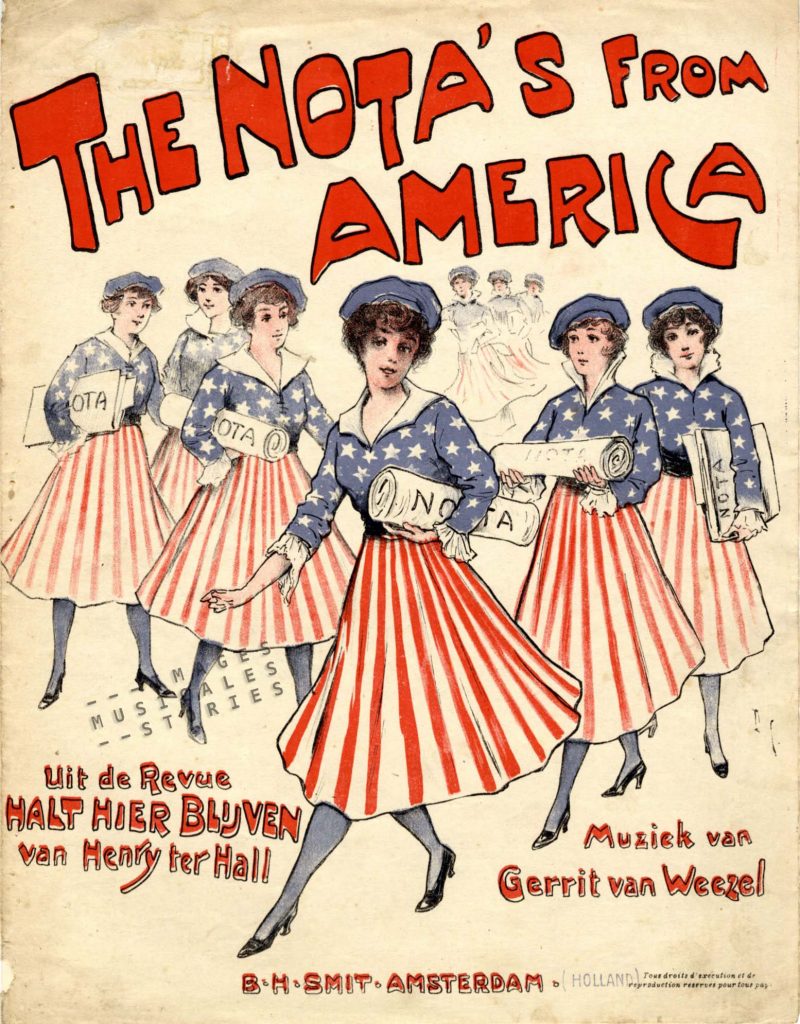
The Nota’s from America is a Dutch song written in pidgin English. The title sarcastically refers to the notes (nota’s in Dutch) which U.S. President Woodrow Wilson sent to the German government in 1915 to criticise their sinking of the Lusitania.
The Lusitania was an ocean liner owned by the famous British Cunard Line. When the Lusitania came into service in 1907, she was an extraordinary ship in every way. With a length of 240 meters the vessel was not only the largest, but also the fastest passenger ship up to that time. The ocean liner sailed regularly from Liverpool to New York and back.
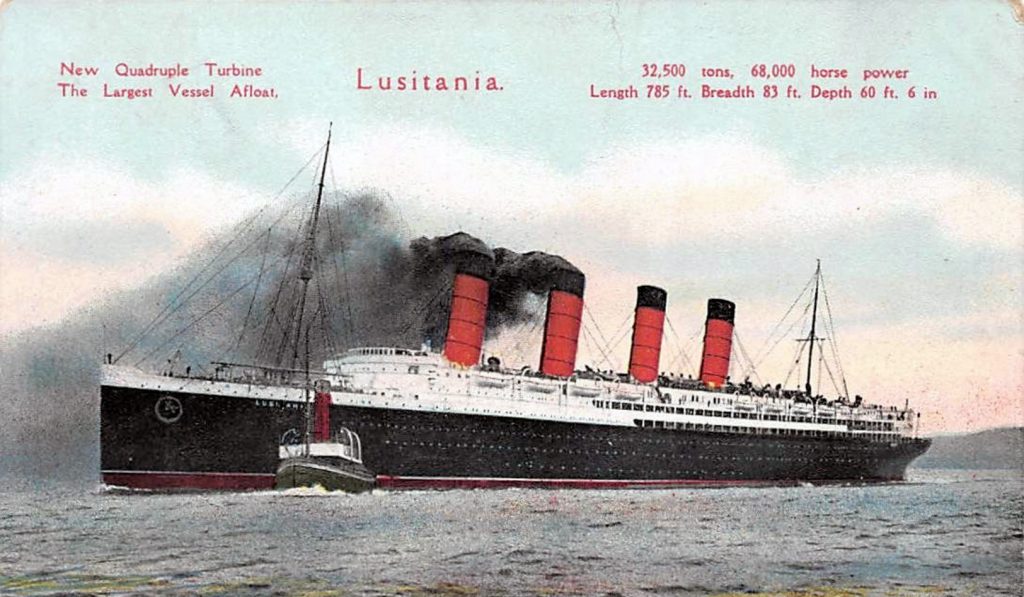
On 17 April 1915, the Lusitania left Liverpool on her 201st transatlantic voyage, arriving a week later in New York. Before her return to Liverpool, the German Embassy placed a warning advertisement in 50 American newspapers, including those in New York. This warning was printed adjacent to an advertisement for Lusitania’s return voyage on May 1. Two months before, Germany had declared the waters around the British Isles a war zone and warned that its U-boats would sink any ship entering the zone without notice.
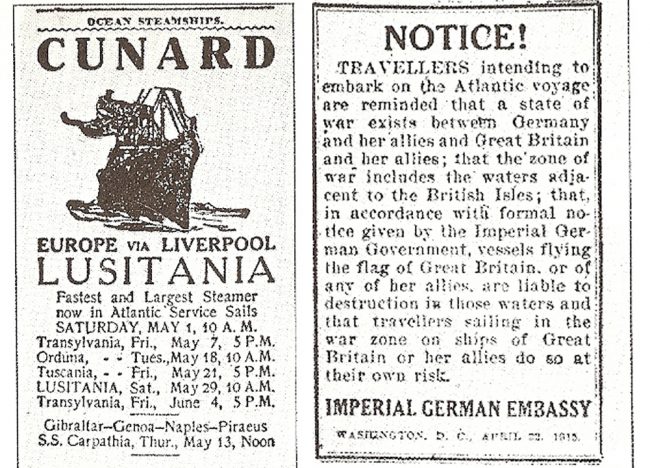
On May 7, 1915, the German submarine U20 hit the Lusitania with one torpedo. The ship sank in less than twenty minutes about 18 km off the coast of Ireland. Nearly 1,200 people were killed including 114 Americans.
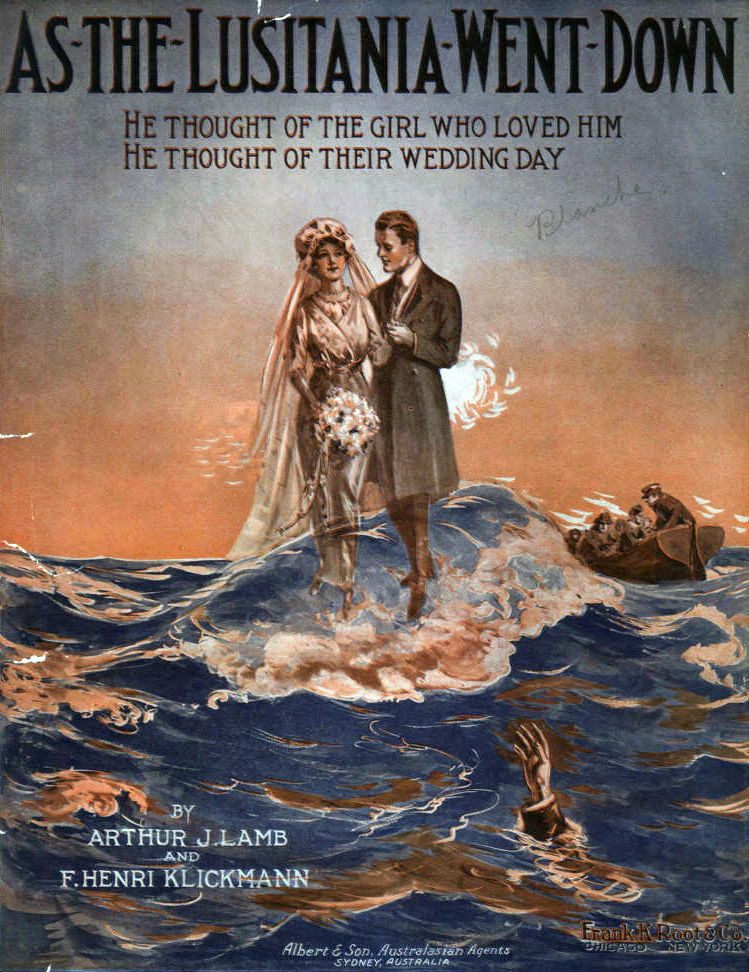
At the start of the war, President Woodrow Wilson had declared that the United States would be neutral. That neutrality however was challenged and fiercely debated in the U.S. after the sinking of the Lusitania.
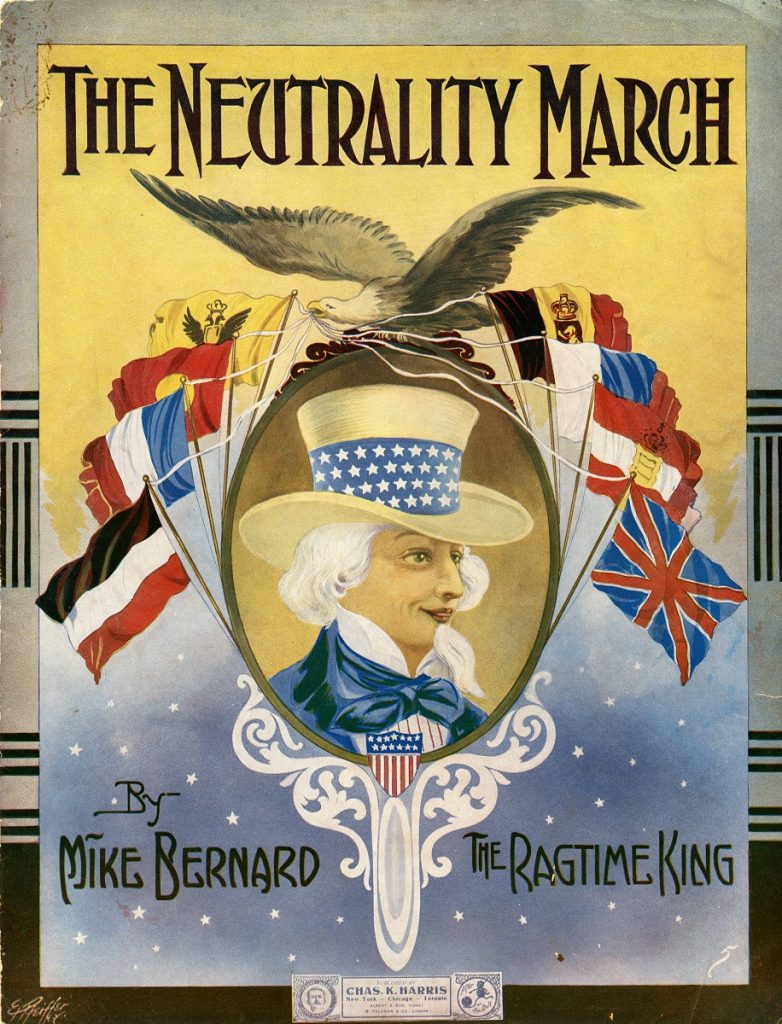
But president Wilson decided to remain neutral and to keep out of the war. Instead he issued a first note to the German government urging it to abandon its policy of unrestricted submarine warfare against commercial ships of any nation, and to pay reparations.
Wilson then issued a second note rejecting Germany’s accusation that the Lusitania had been carrying munitions.
The third Wilson note was a warning that the United States would consider any subsequent sinking of merchant vessels with Americans aboard as deliberately unfriendly.
In 1916 the Dutch painter and illustrator Jan Sluijters created the cartoon Slachterij “der Hochkultur“ (Slaughterhouse “High Culture“): Woodrow Wilson, his gun at the ready, shows his notes to Emperor Wilhelm dressed as a butcher. What seems a human torso hangs by the door.

In January 1917, German U-boats resumed attacking ships in the Atlantic Ocean and the British disclosed the Zimmermann telegram to the American government. This telegram revealed a German proposal for a military alliance with Mexico against the United States. After the American press published the Zimmermann telegram, Wilson got enough public and political support for a declaration of war on Germany on April 6, 1917. This inspired a series of patriotic and belligerent sheet music covers…
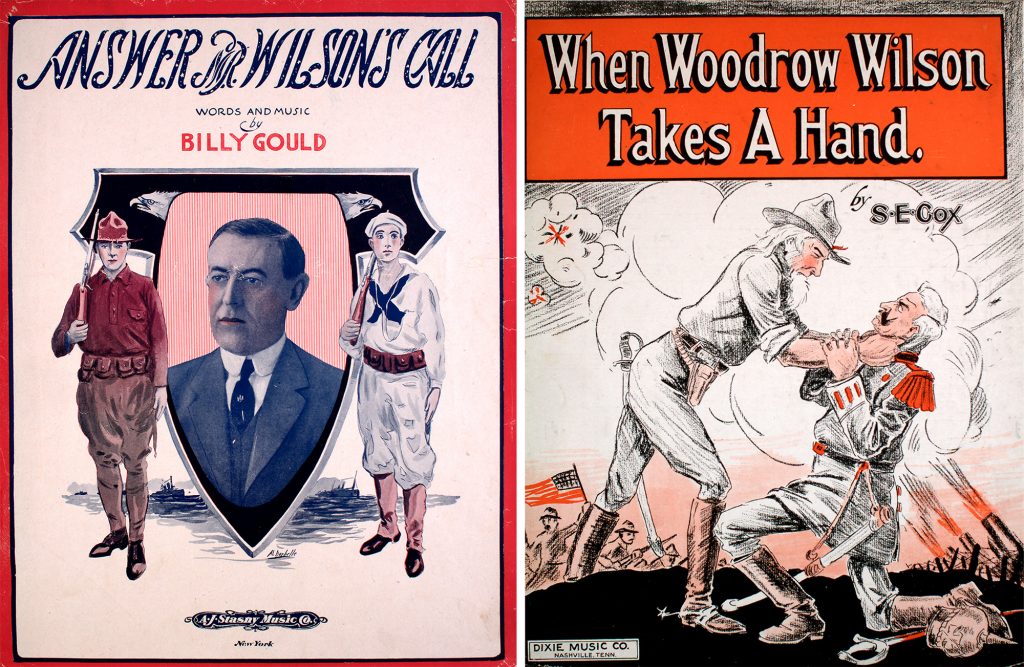
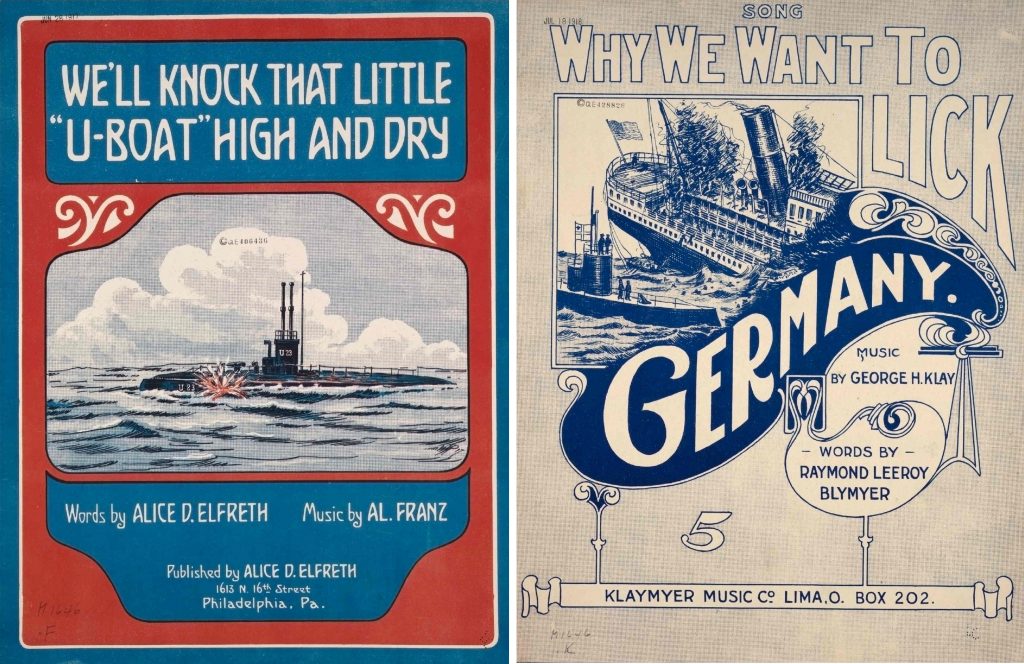
… and even a few tantalizing ones.

